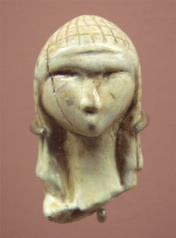FOR IMMEDIATE RELEASE
ACS News Service Weekly PressPac: March 19, 2010
New method could revolutionize dating of ancient treasures
EMBARGOED FOR RELEASE: Tuesday, March 23, 10 a.m., Eastern Time
Scientists today described development of a new method to determine the age of ancient mummies, old artwork, and other relics without causing damage to these treasures of global cultural heritage. Reporting at the 239th National Meeting of the American Chemical Society (ACS), they said it could allow scientific analysis of hundreds of artifacts that until now were off limits because museums and private collectors did not want the objects damaged.
“This technique stands to revolutionize radiocarbon dating,” said Marvin Rowe, Ph.D., who led the research team. “It expands the possibility for analyzing extensive museum collections that have previously been off limits because of their rarity or intrinsic value and the destructive nature of the current method of radiocarbon dating. In theory, it could even be used to date the Shroud of Turin.”
Rowe explained that the new method is a form of radiocarbon dating, the archaeologist’s standard tool to estimate the age of an object by measuring its content of naturally-occurring radioactive carbon. A professor emeritus at Texas A&M University College Station, Rowe teaches at a branch of the university in Qatar. Traditional carbon dating involves removing and burning small samples of the object. Although it sometimes requires taking minute samples of an object, even that damage may be unacceptable for some artifacts. The new method does not involve removing a sample of the object.
![]()
Contact
Science Inquiries: Michael Woods, Editor, 202-872-6293
General Inquiries: Michael Bernstein, 202-872-6042

a tiny ivory figurine, is among
artifacts that scientists could
analyze with a new method
for determining the age of an
object without damaging it.
Credit: Wikimedia Commons
(High-resolution version)

